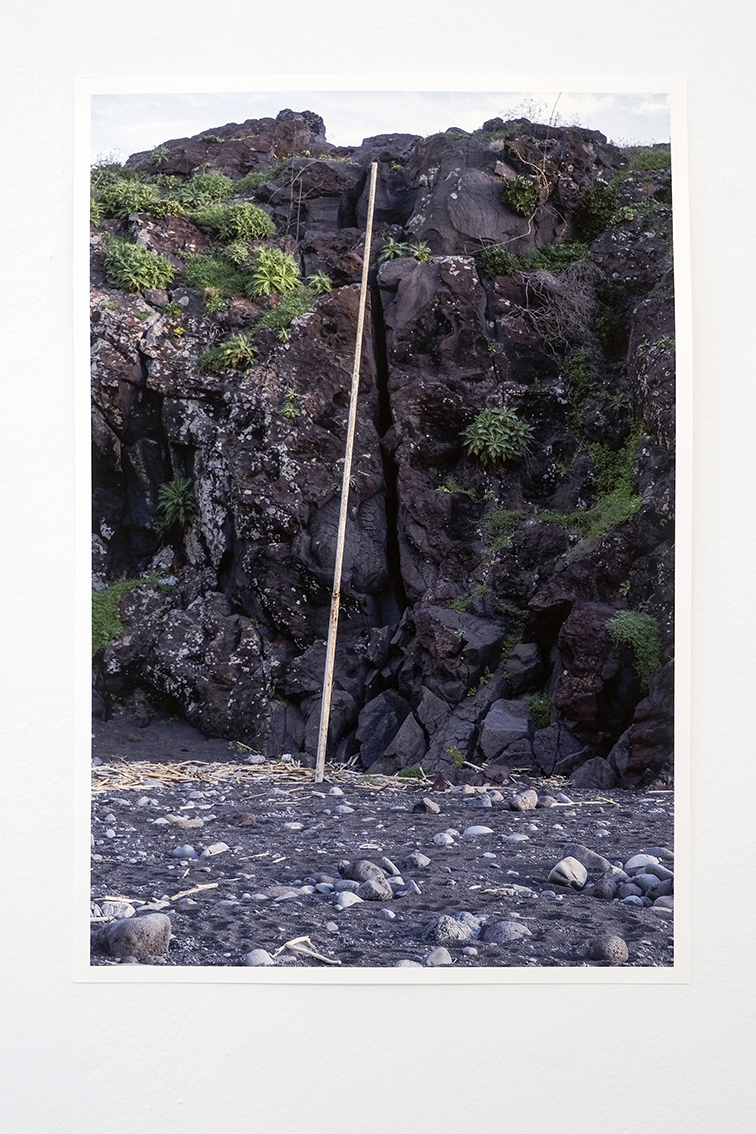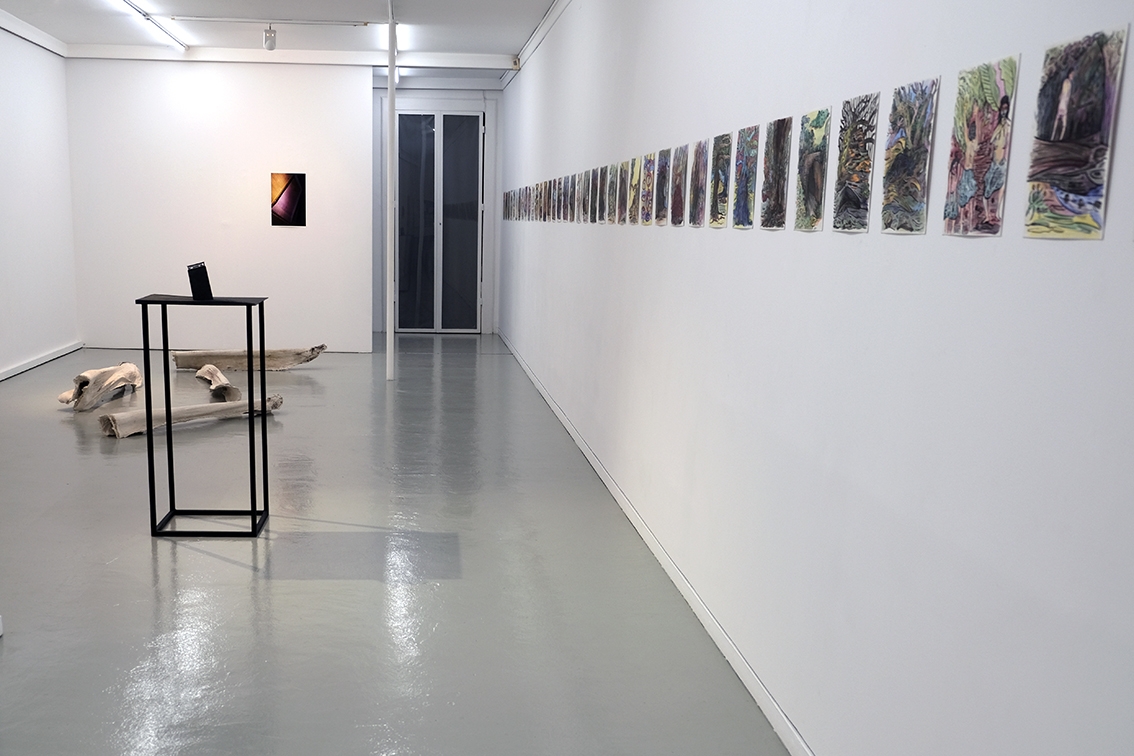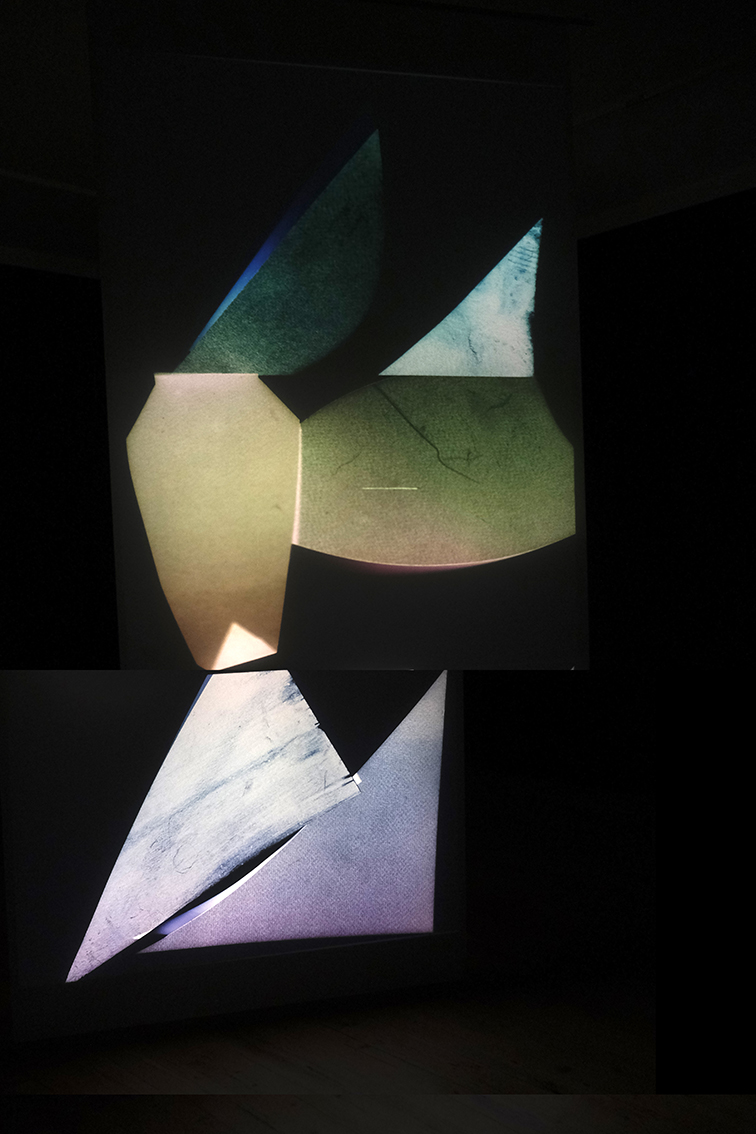













Technical Description
Reta Abatida – 50 x 35.4 cm – photograph of Praia Formosa. Glycée printing on Hahnemuhle 300gr paper.
Premonitory Dream of Tombo – 50 x 35.4 cm – night photograph of a swimming pool in Complexo das Salinas, in Câmara de Lobos, by architects Paulo David and João Gomes da Silva, taken in January 2021. Glycée print on 300gr Hahnemuhle paper.
Porto Novo – 49 x 42 cm + plinth -Mnemonic model. Wood fiber; PVC and iron.
Vestigial bone I; Vestigial bone II; Vestigial bone III; Vestigial bone IV; – 4 sculptures arranged on the ground. Approximately 120x40cm each element. Plaster mold made from imperial palm leaves.
Trauma – fractured sculpture placed on a support on the wall. Approximately 120x40cm. Plaster mold made from imperial palm leaves.Duckfish
Taxonomy - vertical totem of 3 simultaneous slide projections in random time cycles of 240 inverted images (positive-negative inversion and vertical-horizontal axis) and of indeterminate duration. Analog process of production, development and display. Projection support - bakelite 140x300cm
Escafandro boots and helmet - Loan from APRAM - Madeira Harbor Museum - Helmet and diving boots Blandy's Loan- Diving Helmet
Taking as its starting point a lightning trip in a time of pandemic, the DUCK-FISH exhibition starts from evidence collected in furtive incursions from the peaks on the shores of the island. Transitions and oppositions of the most varied nature, such as the groupers that are born female and transition to males; banana trees in the snow; sexual trees and millenary organs; pierced mountains; tunnels in reverse; cows fallen into the sea; architectural edges penetrating the ocean, and other aquatic and insular readings that rose to the surface of memory, are some of the retinal images that serve as jargon for the
exhibition. "What fish could that be? In fact, just by swimming under water he looked like a fish. If he walked on top of the water, in the fire of it, it would be because of the kind of feathers (they were feathers, no doubt) that covered him, because of the fins that covered him. they looked like two feet, because of the fin stubs that looked like wings, because of the staggering and unsteady way of moving, a duck. It was, therefore, a duckfish."
in Novas Andanças do Demónio, Jorge de Sena
This exhibition combines works by Laetitia Morais and Mattia Denisse, who invited him to collaborate with his drawing work that were created uniquely for this exhibition (the photos presented here are exclusively from Laetitia’s works)